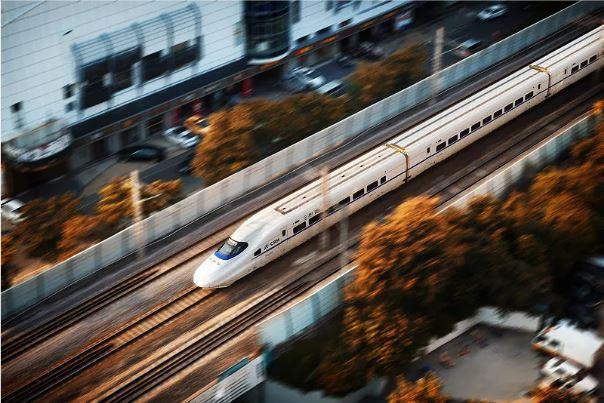In recent times, a new form of tourism called "special forces-style tourism" has become a trend in China. This type of tourism involves travelers visiting multiple attractions within a short period of time. The popularity of this trend continues to grow in China.

"Special forces-style tourism" is supported by not only the travelers' physical fitness and precise planning, but also a highly efficient transportation network. With the continuous improvement and expansion of China's high-speed rail network, the spatial distance between cities is shrinking. Tourists can choose their mode of transportation anytime and anywhere based on their needs, making "spontaneous travel" a reality. Since the opening of high-speed rail in Guangdong 13 years ago, the number of visitors from the Pearl River Delta region to Beijing, Shanghai, Wuhan, Changsha, and other destinations has increased by over 50%, driving the development of tourism and cultural industries along the rail lines.
Behind the "special forces-style tourism" is also thriving regional tourism industries. Starting from Guangzhou South Railway Station, it takes just three hours to reach Guilin in Guangxi Province and a little over five hours to reach Guiyang in Guizhou Province. The Guangzhou-Guiyang high-speed railway connects multiple tourist cities between Guangdong and Guizhou, forming a"golden tourism corridor" that promotes the development of regional tourism.
As the national cultural and tourism industry rapidly recovers, the advantages brought by high-speed rail in terms of regional location are becoming more prominent. Currently, all 21 municipalities in Guangdong Province have access to high-speed rail. Looking north from the core cities of the Guangdong-Hong Kong-Macao Greater Bay Area, the Beijing-Guangzhou high-speed railway serves as a "golden artery" running north-south, while the Ganzhou-Shenzhen high-speed railway, opened in 2021, further connects Guangdong to the north. Looking east, the Shenzhen-Shantou high-speed railway has been in operation for several years, and in the future, a high-speed railway with a speed of 350 kilometers per hour will be constructed from Shantou to Zhangzhou. Looking west, the high-speed railway from Shenzhen via Jiangmen to Zhanjiang and the high-speed railway from Guangzhou to Zhanjiang, with a speed of 350 kilometers per hour, is expected to open by the end of 2024.
The ever-expanding road network and the high-speed rail network, which can cover long distances in a single day, are accelerating the formation of a new tourism pattern of "tourism + railways". This development has elevated the growth of tourism economies along the rail lines to new heights.
羊晚快评|中国高铁助力“特种兵式旅游”
五天登顶五岳、两天逛完北京、24小时吃遍山东淄博……最近,一种名为“特种兵式旅游”的新型旅游在国内成风潮,其特点是出行者在短时内密集游览多个景点,目前热度仍在持续发酵。
“特种兵式旅游”背后,除了游客自身良好的体力和精准的规划外,更要有高度便利的交通网络作为支撑。随着中国高铁不断提速以及路网持续织密,城市之间时空距离不断压缩,游客可以随时随地根据实际情况选择出行方式,让“说走就走”成为现实。广东高铁开通13年来,珠三角到北京、上海、武汉、长沙等地的游客比开通前增长50%以上,带动了沿线旅游资源和文化产业开发。
“特种兵式旅游”背后,还有欣欣向荣的区域旅游发展新图景。从广州南站出发,最快3个小时便可抵达广西桂林,5个多小时便可抵达贵州贵阳。贵广高铁将粤黔之间众多旅游城市串联起来,形成了一条“旅游黄金通道”,带动区域旅游共同发展。
随着全国文旅的快速复苏,高铁带来的区位优势也更加凸显。目前,广东实现了全省21个地市“市市通高铁”。从粤港澳大湾区核心城市向北看,京广铁路“黄金大通道”纵贯南北,而2021年开通的赣深高铁进一步打通了广东向北的通道;向东看,深汕高铁已开通多年,未来还将建设汕头往漳州350公里时速的高铁;向西看,深圳经江门至湛江、广州到湛江的350公里时速高速铁路最快将在2024年底开通……
不断织密的路网体系和一日一图的高铁快车,加速形成了“旅游+铁路”的新旅游格局,也让沿线旅游经济发展“更上一层楼”。
文|李妹妍
图|视觉中国
翻译|刘佳慧
责编|王瑜瑛









